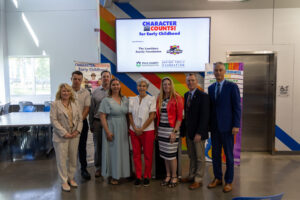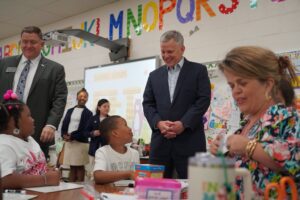North Carolina Students Excel in Literacy, Surpassing National Benchmarks
North Carolina’s kindergarten through third grade students have once again exceeded national averages in literacy assessments, marking the third consecutive year of impressive performance. Recent data shared with the State Board of Education highlights the progress made in early literacy skills across the state.
Between the start and end of the 2023-24 school year, a significant increase of 81,616 students reached or exceeded the benchmark in the DIBELS 8 (Dynamic Indicators of Basic Early Literacy Skills) assessment. Additionally, there was a notable reduction of 53,808 students scoring well below the benchmark.
Across all tested grade levels, a larger percentage of North Carolina students were classified as “on track” compared to the national average. While third graders improved at a pace similar to their national peers, students in kindergarten through second grade demonstrated more substantial progress over the year.
The success of these students is largely attributed to the North Carolina Department of Public Instruction (NCDPI)’s implementation of the Language Essentials for Teachers of Reading and Spelling, or LETRS®. This two-year professional development program for K-3 teachers began in the 2021-22 academic year, and the final group of educators completed their training this June. LETRS provides teachers with instructional strategies based on extensive research into reading science.
State Superintendent Catherine Truitt expressed her optimism about the program’s impact, saying, “They call it the ‘science’ of reading because, like any scientific concept, these methods are grounded in research and data. When we implemented LETRS, we knew we’d see results. But to have so many students improve this early in our state’s new literacy journey is a wonderful surprise. It speaks to the dedication of our teachers and the efficacy of the professional development coordinated by NCDPI’s Office of Early Learning.”
The DIBELS 8 assessment, implemented alongside the LETRS training, evaluates key reading skills in kindergarten through third grade students. The assessment is conducted at the beginning, middle, and end of each school year to monitor students’ literacy progress.
Among the various grade levels, kindergarten showed the most dramatic improvement, with a 40 percent increase in students on track in reading during the 2023-24 school year, compared to a 25 percent average increase in other states.
Amy Rhyne, senior director of NCDPI’s Office of Early Learning, explained that reading skills build upon each other from year to year, which can result in differences in achievement across grades. She noted, “This year’s third graders were already in first grade by the time the original cohort of teachers began LETRS, so it makes sense that they’re not experiencing as much growth as the K-2 students who were exposed to the science of reading earlier. Now that all of our students will enter kindergarten with a teacher who has completed LETRS training, they’ll be able to build a really strong foundation. We expect to see that reflected in even greater achievement for our students in years to come.”
Read More Here












